The Wild Jackfruit is a large tree, with its origins in the humid regions of the southern Himalayas. Its leaves are smooth, between 10-20 cms., and either elongated or elliptical; they are dark green and leathery on the upside, with pronounced veins on a lighter green underside. Both the male and female flowers bloom on the same tree; the first are yellow, the second, of a reddish hue. The fruit, 5-12 cms. in diameter, sometimes puffy, sometimes well-rounded, are a yellowish-orange, with a pink stem, and smooth surface. Each fruit contains approximately thirty small seeds and is edible, even though it does do not look particularly appetizing.
The flesh is refreshing and slightly acidic, but the Lao don’t like it too much, instead they rely mostly on the medicinal virtues of this tree to fight intestinal diseases. After having boiled wood shavings of the tone hat in water, the mixture is reduced to obtain a deposit of yellow powder, specifically called pheuak hat; the prescribed dosage for children is three grams of powder, taken in the morning, dissolved in a glass of water, and followed two hours later by a laxative. This medication appears in the listings of the Traditional Medicine Centre and has been tested in numerous laboratories in both Thailand and India with positive results.
The wood of the tone hat also serves to create the thin wooden bars of the Ranat, the traditional Lao xylophone; and the resonance chamber of this musical instrument is made from the wood of another species of Artocarpus. These trees also provide a good yellow dye, which, these days, is more or less neglected.
Numerous studies are taking place, particularly in India, of the possible interest in Artocarpus Lacucha. The researchers’ motivation is prompted by the desire to preserve a biodiversity endangered by the standardization of methods of food processing to which humans fall vulnerable. They stress the benefits of natural foods, and they are systematically studying the local neglected plant life. Thus, the Monkey Jack is a good dietary addition, whereby the male flowers and the fruit can be eaten raw, cooked, or in brine. Moreover, the wood of the Monkey Jack tree is as equally hard and rot-proof as that of the Teck, and its leaves provide a very rich fodder. The pharmaceutical industry has also confirmed an anti-parasitic activity in the wood of the wild Monkey Jack Tree, and has promoted it in the fight against the ageing process of human skin.
The tone hat is, therefore, a tree to protect and cultivate; its reproduction is fragile, its seeds are only fertile for a very short time (a few days) and it takes them a few years in which to germinate.
Le Jaquier sauvage est un grand arbre originaire des régions humides du Sud de l’Himalaya, il a des feuilles simples, alternes, oblongues ou elliptiques de 10 à 20cm; elles sont coriaces et vert foncé sur la face supérieure, plus clair sur la face inférieure avec des nervures très marquées. Les fleurs mâles et femelles éclosent sur un même arbre, les premières jaunes, les secondes rougeâtres. Les fruits sont parfois bien ronds, parfois boursouflés, de 5 à 12cm de diamètre; ils sont jaune orangé, avec une tige rose et une surface plucheuse. Chaque fruit contient une trentaine de petites graines.
Ces fruits sont comestibles bien que d’aspect peu appétissant; la pulpe est légèrement acidulée et rafraîchissante mais les Lao ne l’apprécient guère. Ils insistent en revanche beaucoup sur les vertus médicinales de cet arbre pour lutter contre les vers intestinaux. Après avoir fait bouillir dans de l’eau des copeaux de bois de tone hat la préparation est réduite pour obtenir un dépôt de poudre jaune au nom spécifique: pheuak hat; la dose recommandée est de trois gr de poudre prise à jeun le matin dans un verre d’eau, suivi d’un laxatif deux heures après. Ce médicament est inscrit sur les listes de l’Institut de Médecine Traditionnelle (IMT) et il a été testé dans plusieurs laboratoires en Thaïlande et en Inde avec des résultats positifs. Ajoutons que l’écorce séchée de tone hat est parfois ajoutée à la chique de bétel.
Une autre utilisation du bois de tone hat est la fabrication des lamelles du ranat, xylophone traditionnel lao; la caisse de résonance de cet instrument de musique est faite, elle, avec le bois d’un autre Artocarpus. Ces arbres donnent aussi une bonne teinture jaune plus ou moins délaissée de nos jours.
De nombreuses études sont en cours, en particulier en Inde, sur l’intérêt que peut présenter Artocarpus lacucha. La motivation des chercheurs s’inscrit dans le désir de préserver une biodiversité mise en danger par une certaine uniformisation des modes alimentaires qui rend plus vulnérable l’espèce humaine. Ils insistent sur les bienfaits d’une alimentation de cueillette et ils étudient systématiquement les plantes locales délaissées. Le Jaquier sauvage est ainsi un bon complément alimentaire dont les fleurs mâles et les fruits peuvent être consommés crus, cuits ou en saumure. Par ailleurs, son bois serait aussi dur et imputrescible que celui du Teck et son feuillage est un fourrage très riche. L’Industrie pharmaceutique a, en outre, confirmé l’activité antiparasitaire du bois de Jaquier sauvage et révélé son activité dans la lutte contre les processus de vieillissement cutané.
Ton hat est donc un arbre à protéger et à multiplier d’autant que sa reproduction est délicate, les graines ont en effet une durée de fécondité très courte (quelques jours) et elles mettent ensuite plusieurs années pour germer.
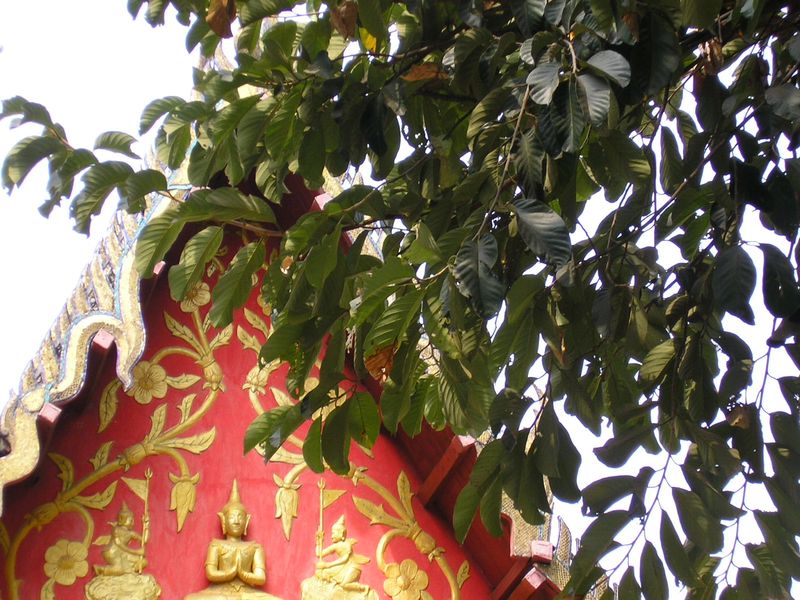
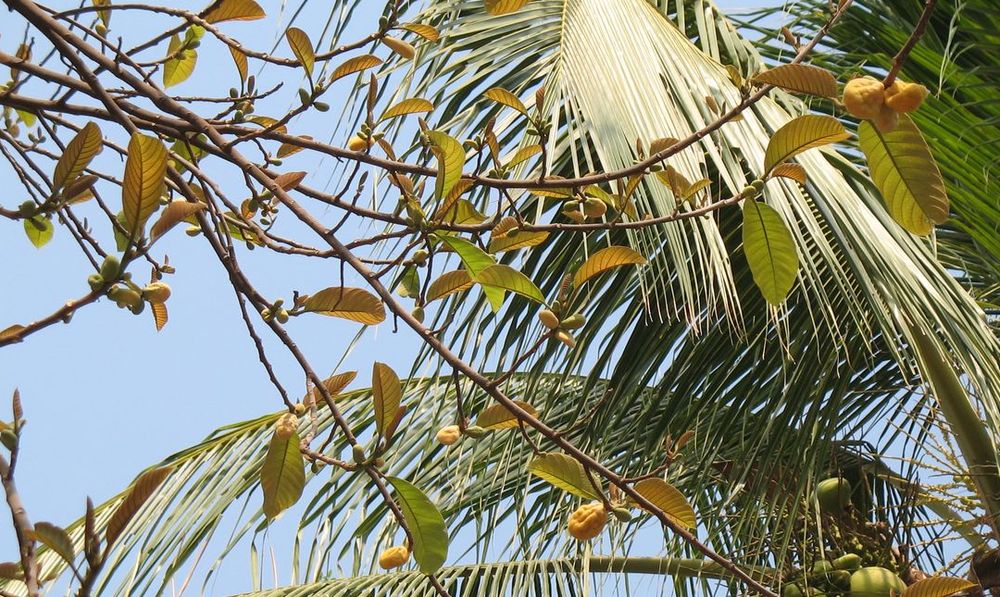
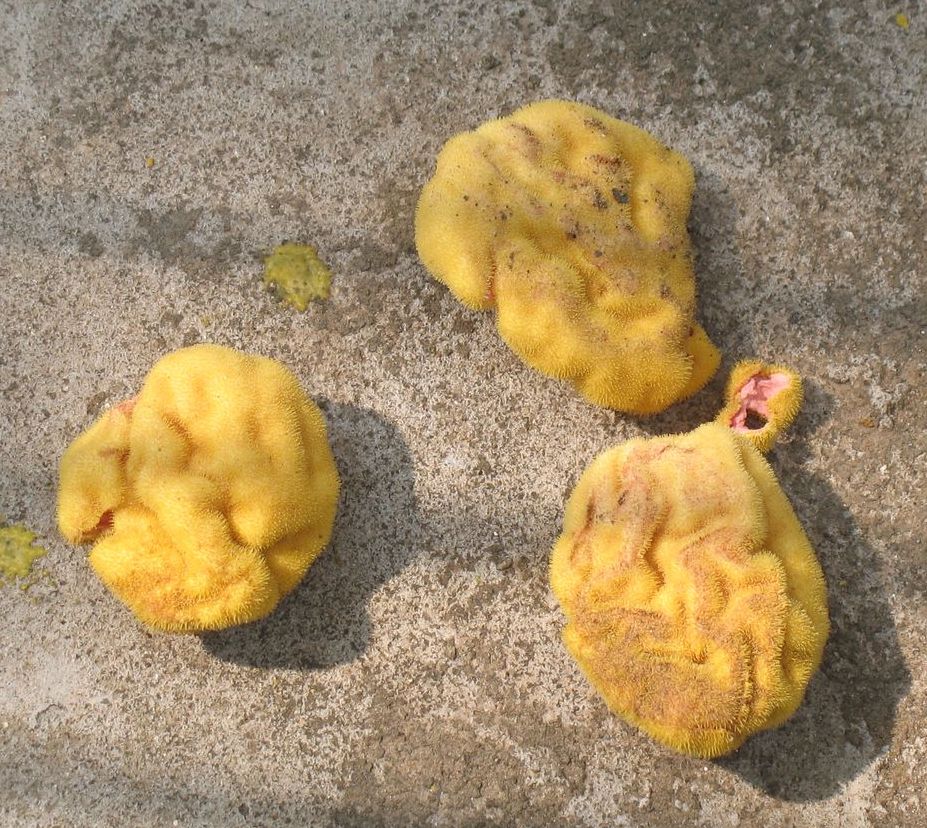
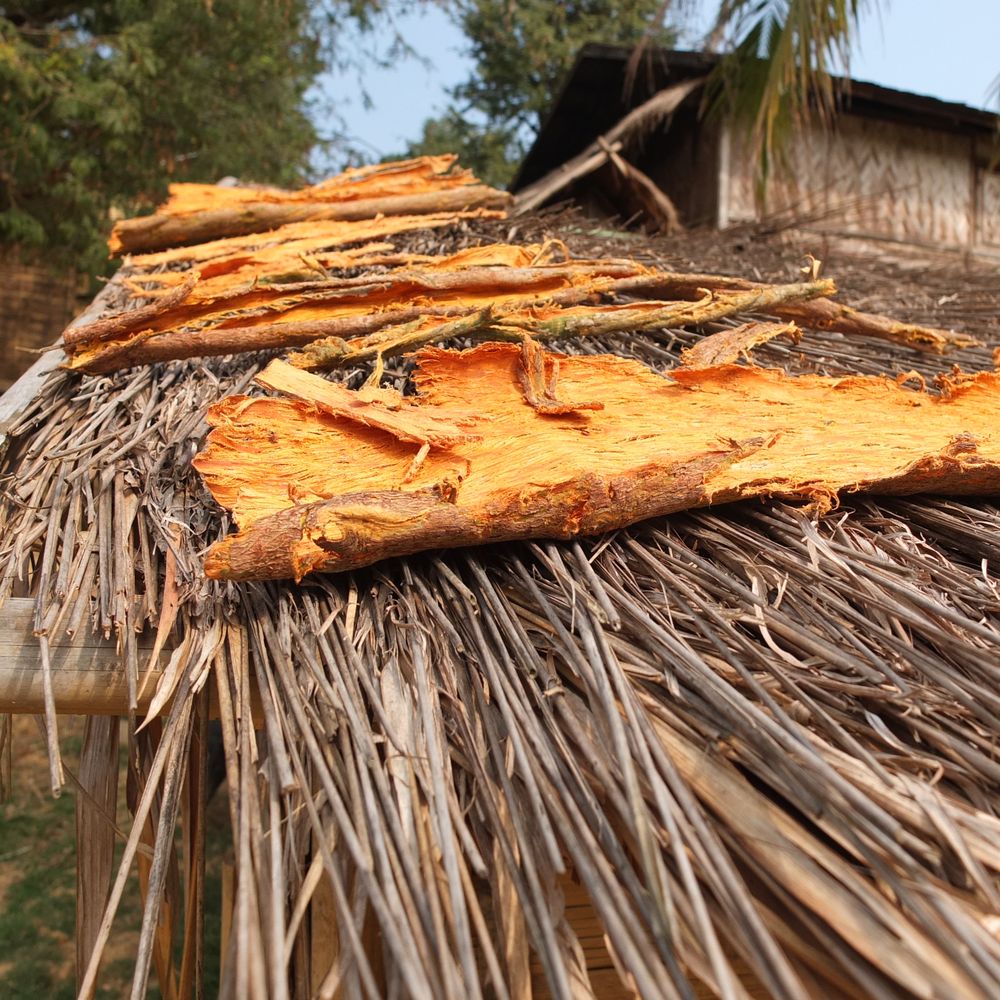
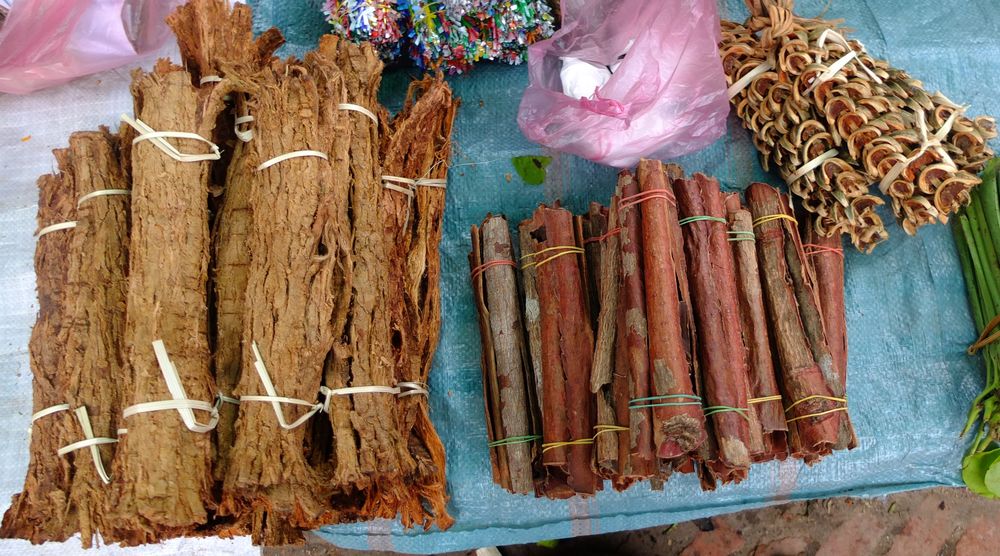
The Wild Jackfruit is a large tree, with its origins in the humid regions of the southern Himalayas. Its leaves are smooth, between 10-20 cms., and either elongated or elliptical; they are dark green and leathery on the upside, with pronounced veins on a lighter green underside. Both the male and female flowers bloom on the same tree; the first are yellow, the second, of a reddish hue. The fruit, 5-12 cms. in diameter, sometimes puffy, sometimes well-rounded, are a yellowish-orange, with a pink stem, and smooth surface. Each fruit contains approximately thirty small seeds and is edible, even though it does do not look particularly appetizing.
The flesh is refreshing and slightly acidic, but the Lao don’t like it too much, instead they rely mostly on the medicinal virtues of this tree to fight intestinal diseases. After having boiled wood shavings of the tone hat in water, the mixture is reduced to obtain a deposit of yellow powder, specifically called pheuak hat; the prescribed dosage for children is three grams of powder, taken in the morning, dissolved in a glass of water, and followed two hours later by a laxative. This medication appears in the listings of the Traditional Medicine Centre and has been tested in numerous laboratories in both Thailand and India with positive results.
The wood of the tone hat also serves to create the thin wooden bars of the Ranat, the traditional Lao xylophone; and the resonance chamber of this musical instrument is made from the wood of another species of Artocarpus. These trees also provide a good yellow dye, which, these days, is more or less neglected.
Numerous studies are taking place, particularly in India, of the possible interest in Artocarpus Lacucha. The researchers’ motivation is prompted by the desire to preserve a biodiversity endangered by the standardization of methods of food processing to which humans fall vulnerable. They stress the benefits of natural foods, and they are systematically studying the local neglected plant life. Thus, the Monkey Jack is a good dietary addition, whereby the male flowers and the fruit can be eaten raw, cooked, or in brine. Moreover, the wood of the Monkey Jack tree is as equally hard and rot-proof as that of the Teck, and its leaves provide a very rich fodder. The pharmaceutical industry has also confirmed an anti-parasitic activity in the wood of the wild Monkey Jack Tree, and has promoted it in the fight against the ageing process of human skin.
The tone hat is, therefore, a tree to protect and cultivate; its reproduction is fragile, its seeds are only fertile for a very short time (a few days) and it takes them a few years in which to germinate.
Le Jaquier sauvage est un grand arbre originaire des régions humides du Sud de l’Himalaya, il a des feuilles simples, alternes, oblongues ou elliptiques de 10 à 20cm; elles sont coriaces et vert foncé sur la face supérieure, plus clair sur la face inférieure avec des nervures très marquées. Les fleurs mâles et femelles éclosent sur un même arbre, les premières jaunes, les secondes rougeâtres. Les fruits sont parfois bien ronds, parfois boursouflés, de 5 à 12cm de diamètre; ils sont jaune orangé, avec une tige rose et une surface plucheuse. Chaque fruit contient une trentaine de petites graines.
Ces fruits sont comestibles bien que d’aspect peu appétissant; la pulpe est légèrement acidulée et rafraîchissante mais les Lao ne l’apprécient guère. Ils insistent en revanche beaucoup sur les vertus médicinales de cet arbre pour lutter contre les vers intestinaux. Après avoir fait bouillir dans de l’eau des copeaux de bois de tone hat la préparation est réduite pour obtenir un dépôt de poudre jaune au nom spécifique: pheuak hat; la dose recommandée est de trois gr de poudre prise à jeun le matin dans un verre d’eau, suivi d’un laxatif deux heures après. Ce médicament est inscrit sur les listes de l’Institut de Médecine Traditionnelle (IMT) et il a été testé dans plusieurs laboratoires en Thaïlande et en Inde avec des résultats positifs. Ajoutons que l’écorce séchée de tone hat est parfois ajoutée à la chique de bétel.
Une autre utilisation du bois de tone hat est la fabrication des lamelles du ranat, xylophone traditionnel lao; la caisse de résonance de cet instrument de musique est faite, elle, avec le bois d’un autre Artocarpus. Ces arbres donnent aussi une bonne teinture jaune plus ou moins délaissée de nos jours.
De nombreuses études sont en cours, en particulier en Inde, sur l’intérêt que peut présenter Artocarpus lacucha. La motivation des chercheurs s’inscrit dans le désir de préserver une biodiversité mise en danger par une certaine uniformisation des modes alimentaires qui rend plus vulnérable l’espèce humaine. Ils insistent sur les bienfaits d’une alimentation de cueillette et ils étudient systématiquement les plantes locales délaissées. Le Jaquier sauvage est ainsi un bon complément alimentaire dont les fleurs mâles et les fruits peuvent être consommés crus, cuits ou en saumure. Par ailleurs, son bois serait aussi dur et imputrescible que celui du Teck et son feuillage est un fourrage très riche. L’Industrie pharmaceutique a, en outre, confirmé l’activité antiparasitaire du bois de Jaquier sauvage et révélé son activité dans la lutte contre les processus de vieillissement cutané.
Ton hat est donc un arbre à protéger et à multiplier d’autant que sa reproduction est délicate, les graines ont en effet une durée de fécondité très courte (quelques jours) et elles mettent ensuite plusieurs années pour germer.










The Wild Jackfruit is a large tree, with its origins in the humid regions of the southern Himalayas. Its leaves are smooth, between 10-20 cms., and either elongated or elliptical; they are dark green and leathery on the upside, with pronounced veins on a lighter green underside. Both the male and female flowers bloom on the same tree; the first are yellow, the second, of a reddish hue. The fruit, 5-12 cms. in diameter, sometimes puffy, sometimes well-rounded, are a yellowish-orange, with a pink stem, and smooth surface. Each fruit contains approximately thirty small seeds and is edible, even though it does do not look particularly appetizing.
The flesh is refreshing and slightly acidic, but the Lao don’t like it too much, instead they rely mostly on the medicinal virtues of this tree to fight intestinal diseases. After having boiled wood shavings of the tone hat in water, the mixture is reduced to obtain a deposit of yellow powder, specifically called pheuak hat; the prescribed dosage for children is three grams of powder, taken in the morning, dissolved in a glass of water, and followed two hours later by a laxative. This medication appears in the listings of the Traditional Medicine Centre and has been tested in numerous laboratories in both Thailand and India with positive results.
The wood of the tone hat also serves to create the thin wooden bars of the Ranat, the traditional Lao xylophone; and the resonance chamber of this musical instrument is made from the wood of another species of Artocarpus. These trees also provide a good yellow dye, which, these days, is more or less neglected.
Numerous studies are taking place, particularly in India, of the possible interest in Artocarpus Lacucha. The researchers’ motivation is prompted by the desire to preserve a biodiversity endangered by the standardization of methods of food processing to which humans fall vulnerable. They stress the benefits of natural foods, and they are systematically studying the local neglected plant life. Thus, the Monkey Jack is a good dietary addition, whereby the male flowers and the fruit can be eaten raw, cooked, or in brine. Moreover, the wood of the Monkey Jack tree is as equally hard and rot-proof as that of the Teck, and its leaves provide a very rich fodder. The pharmaceutical industry has also confirmed an anti-parasitic activity in the wood of the wild Monkey Jack Tree, and has promoted it in the fight against the ageing process of human skin.
The tone hat is, therefore, a tree to protect and cultivate; its reproduction is fragile, its seeds are only fertile for a very short time (a few days) and it takes them a few years in which to germinate.
Le Jaquier sauvage est un grand arbre originaire des régions humides du Sud de l’Himalaya, il a des feuilles simples, alternes, oblongues ou elliptiques de 10 à 20cm; elles sont coriaces et vert foncé sur la face supérieure, plus clair sur la face inférieure avec des nervures très marquées. Les fleurs mâles et femelles éclosent sur un même arbre, les premières jaunes, les secondes rougeâtres. Les fruits sont parfois bien ronds, parfois boursouflés, de 5 à 12cm de diamètre; ils sont jaune orangé, avec une tige rose et une surface plucheuse. Chaque fruit contient une trentaine de petites graines.
Ces fruits sont comestibles bien que d’aspect peu appétissant; la pulpe est légèrement acidulée et rafraîchissante mais les Lao ne l’apprécient guère. Ils insistent en revanche beaucoup sur les vertus médicinales de cet arbre pour lutter contre les vers intestinaux. Après avoir fait bouillir dans de l’eau des copeaux de bois de tone hat la préparation est réduite pour obtenir un dépôt de poudre jaune au nom spécifique: pheuak hat; la dose recommandée est de trois gr de poudre prise à jeun le matin dans un verre d’eau, suivi d’un laxatif deux heures après. Ce médicament est inscrit sur les listes de l’Institut de Médecine Traditionnelle (IMT) et il a été testé dans plusieurs laboratoires en Thaïlande et en Inde avec des résultats positifs. Ajoutons que l’écorce séchée de tone hat est parfois ajoutée à la chique de bétel.
Une autre utilisation du bois de tone hat est la fabrication des lamelles du ranat, xylophone traditionnel lao; la caisse de résonance de cet instrument de musique est faite, elle, avec le bois d’un autre Artocarpus. Ces arbres donnent aussi une bonne teinture jaune plus ou moins délaissée de nos jours.
De nombreuses études sont en cours, en particulier en Inde, sur l’intérêt que peut présenter Artocarpus lacucha. La motivation des chercheurs s’inscrit dans le désir de préserver une biodiversité mise en danger par une certaine uniformisation des modes alimentaires qui rend plus vulnérable l’espèce humaine. Ils insistent sur les bienfaits d’une alimentation de cueillette et ils étudient systématiquement les plantes locales délaissées. Le Jaquier sauvage est ainsi un bon complément alimentaire dont les fleurs mâles et les fruits peuvent être consommés crus, cuits ou en saumure. Par ailleurs, son bois serait aussi dur et imputrescible que celui du Teck et son feuillage est un fourrage très riche. L’Industrie pharmaceutique a, en outre, confirmé l’activité antiparasitaire du bois de Jaquier sauvage et révélé son activité dans la lutte contre les processus de vieillissement cutané.
Ton hat est donc un arbre à protéger et à multiplier d’autant que sa reproduction est délicate, les graines ont en effet une durée de fécondité très courte (quelques jours) et elles mettent ensuite plusieurs années pour germer.


